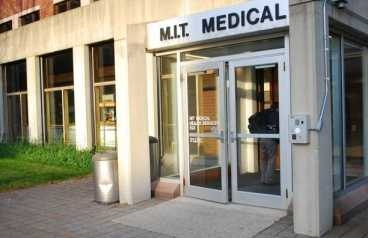In a pair of online chats last week, MIT Medical clinicians and staff responded to patients’ questions and concerns surrounding late-night urgent care and other issues surrounding the community care proposal.
On hand for the May 4 chat were William Kettyle, M.D., medical director; David Diamond, M.D., associate medical director; Kristine Ruzycki, A.N.P.-B.C., chief of nursing services and director of student health services; Maryanne Kirkbride, clinical director for campus life; and Lucy Walsh, manager of the MIT Health Plans. The May 5 chat featured Kettyle, Diamond, Walsh, and nurse care manager Kim Carroll, B.S.N., R.N.
During the chats, MIT Medical staff reminded participants of some facts about the current state of late-night and inpatient care at MIT:
- There are currently very few late-night visits to Urgent Care (459 visits between midnight to 7 a.m. in all of 2009).
- Of those visits, most are for non-urgent conditions that could have been seen during Urgent Care’s daytime and early evening hours.
- Urgent Care is not a substitute for an emergency room. Patients with true medical emergencies are sent to a hospital, which has much more sophisticated testing and equipment, and this is not changing under the new proposal.
- While much appreciated by patients and family members, use of the 18-bed Inpatient Unit has been steadily declining (the patient census average was down to 1.8 per day in 2009).
Other issues discussed in the chats (links go to relevant sections of the online chat transcripts):
After-hours phone calls — When Urgent Care is not open, calls will be routed to the medical phone service that MIT Medical successfully used last summer when hours were reduced, Kettyle explained at the end of the May 5 chat. Experienced nurses will gather information about the problem and give advice on what to do. That advice may include consulting by phone with an MIT Medical physician, visiting MIT Medical in the morning, or going to a hospital.
Non-emergency overnight urgent care — Acknowledging that hospital emergency rooms can sometimes involve a long wait, MIT Medical is working with Mount Auburn Hospital for access to non-emergency services during the night at no additional cost to students, Kettyle said near the end of the May 4 chat.
Handling intoxicated students — MIT Medical is working with its partner hospital, Mount Auburn, on addressing concerns about parental notification and medical expenses for students who may be dangerously intoxicated after hours. Overnight services at MIT Medical will remain open until the new procedures and policies are tested.
Busy students finding time to seek medical care — Under the proposed changes, Urgent Care will be 7 a.m. until 11 p.m., seven days a week. Although MIT students generally don’t follow a 9-to-5 schedule, the 16-hour daily window should be sufficient for sick students to seek care when not occupied with classes, labs or other scheduled activities.
Financial savings — Every area of the Institute has had to reduce its spending and MIT Medical is no exception. The community care proposal would save MIT Medical about $1 million per year, or about 2.5 percent of its current annual budget.
Transitioning from an Inpatient Unit to a Community Care Center — Apart from basic budget considerations, the community care proposal is a response to larger changes in medical care, including a shift from inpatient care to more clinic- and home-based care. The proposal reassigns some Inpatient Unit nurses to become daytime community nurse care managers to meet this need.
What the nurse care managers will do — MIT Medical’s current nurse care manager Kim Carroll, provides direct patient care (assessments, IVs, etc.) and acts as a liaison among patients, family members, and outside providers, including hospitals. Under the community care proposal, several additional nurse care managers will carry out these duties as well as doing more patient outreach, including “house calls” to students in dorms.
Post-operative rehabilitation care — Insurance coverage, including coverage for inpatient rehab services, is not changing. Also, the expanded team of community care nurse managers will ensure that patients have the care and support they need, whether they’re in a hospital, at a rehab center, or at home.
Hospitalization coverage — Both students and members of the employee health plans will still have the current $100 emergency room copay, which is waived if the ER visit results in a hospital admission. And if a student is admitted to the hospital for something for which he or she would have been admitted to the Inpatient Unit, there won't be any copay.






